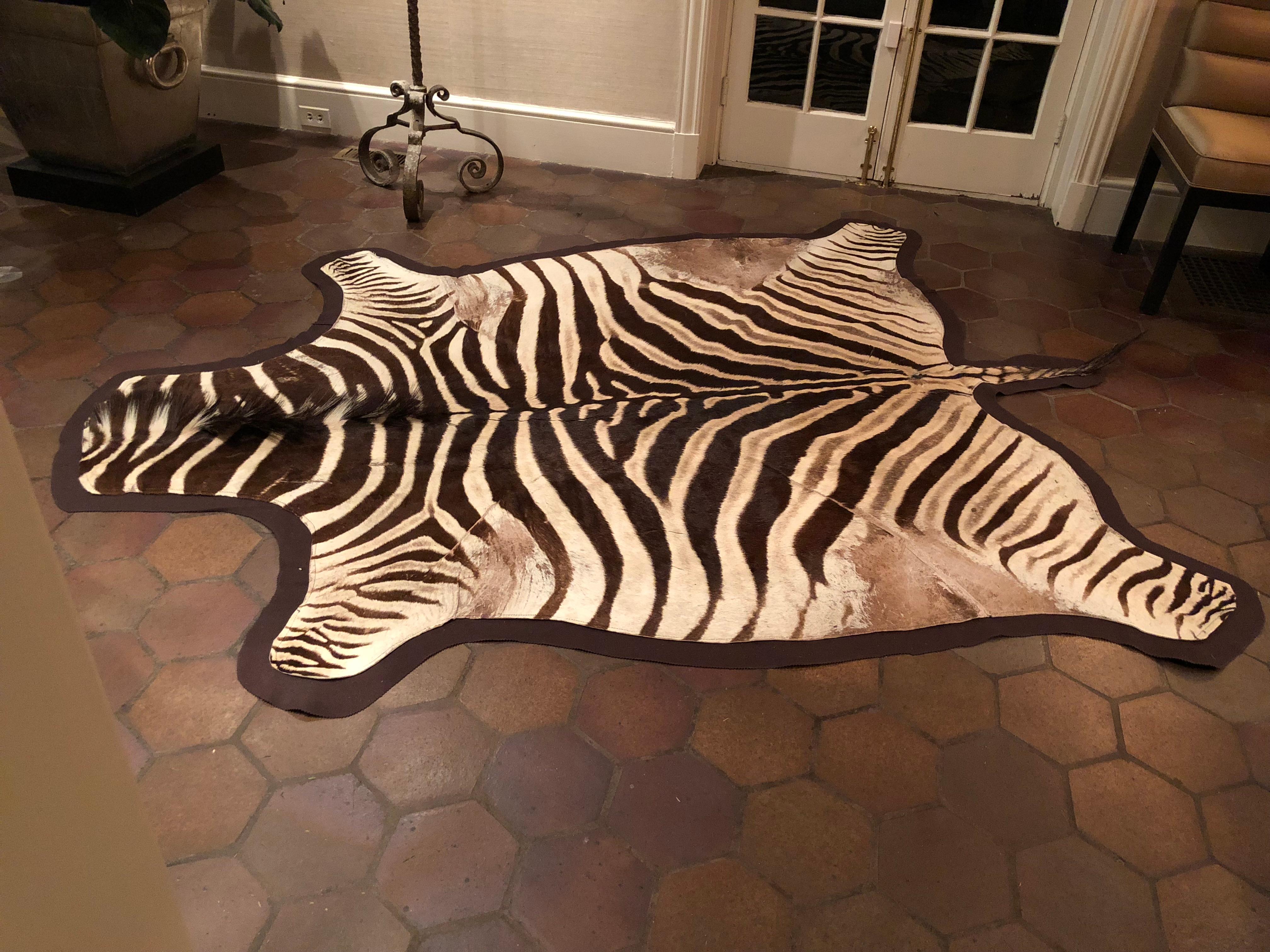
It is only after the suede side is satisfactory cleaned and rejuvenated to the desired softness, suppleness and strength that the hair side commences it cleaning and conditioning (lubricating). The cleaning sequence of process for the suede side is as follows:ġ] Suede Eraser-5 is used to re-nap and exfliolate deteriorated fibers.Ģ] Basic cleaning is done with Cleaner-3.8 follows with Rinse-3.0ģ] Hydrating is done with Hydrator-3.3 to relax unwanted coarse breaks or creases.Ĥ] Fatliquor replenishing is done with Faliquor-5.0 There are two sides to the cleaning, the suede side and the hair side.
ZEBRA RUG REAL HOW TO
I'd like to get some info on how to clean it safely.
ZEBRA RUG REAL SKIN
This will cause the breaking of the fatliquor hydrogen-bonding commonly manifest as stiffness when skin is wet and dry again. If solution has a pH above the leather neutral of 3 to 5, it will cause the protein fibers to shift its ionic charge negative. They are hydrogen-bond like magnet unlike poles attracts. Protein leather has a positive charge and the other tanning agents and fatliquor are negatively charged. Because leather is protein fiber and besides up to more than a quarter in weights is other constituents that make up the leather, otherwise it is not leather without these constituents such as the tanning agent and the fatliquor. Now any wetness at this stage with even water at pH 7 and above will cause the denaturing of the skin. The secret is in knowing the pH of the wetness at every stage of the tanning process, with the end result of the skin averaging from pH 3 to 5. Why it is so that wetting the skin will damage it in the aftercare and the same skin is process from the tannery completely wet through. I've read where you shouldn't wet the skin because it will shrivel.

Now, this tannery grade fatliquor is available in a bottle for simple application without putting them into tanning drums to process it. Fatliquor, the lifeblood of skin and leathers needs to be periodically replenished to maintain its perpetual softness, suppleness and strength.

It's never been cleaned or hydrated.Ģ0 years is a long time, the fat and oil that makes the skin supple has long evaporated as VOC (volatile organic compound). I have a twenty pus year old zebra skin non-felt the I got in S.A.
ZEBRA RUG REAL FREE
The fat will plumps up the leather with fullness the oil is to lubricate the skin with softness, suppleness and strength and the water with a smaller molecule than the fat and oil encased them to penetrate the skin and breaks free thereafter to leave a breathing space between the inter-fibrillary spaces for the healthy skin to breathe. Fatliquor is an emulsion of fat and oil in water that looks like fresh milk. And most of this moisture contents comes from fatliquor. Moisture contents of a healthy skin should be averaging 14%. The curl up edges, coarse breaks at frank and tail are sign of skin dryness. This picture shows the empty skin without the fatliquor fullness with coarse break or fault line creases. Further lubricating the hair with a silky feel will reduce friction wear. Diminishing original fatliquor further causes the skin to lose its strength that need to be replenished. Skins on these weaker areas are not as tight. This picture shows the thinning of hair at the franks. It also show that the skin has loss it suppleness with diminished original fatliquor. If the back is the same color as the front, then it may not be chrome-tanned. This picture shows the color difference from the front and the back. Using a suede Eraser-5 will renew its nap. To confirm that it is tanned and not raw-hide, the reverse has to be suede and the suede fibers can be scrap off. Raw-hide would have the typical creamy transparency look just like those bone-shape rawhides chew for dogs and they are pretty stiff and hard.

Its color of bluish gray is typical of a “chrome-tanned” skin.


 0 kommentar(er)
0 kommentar(er)
